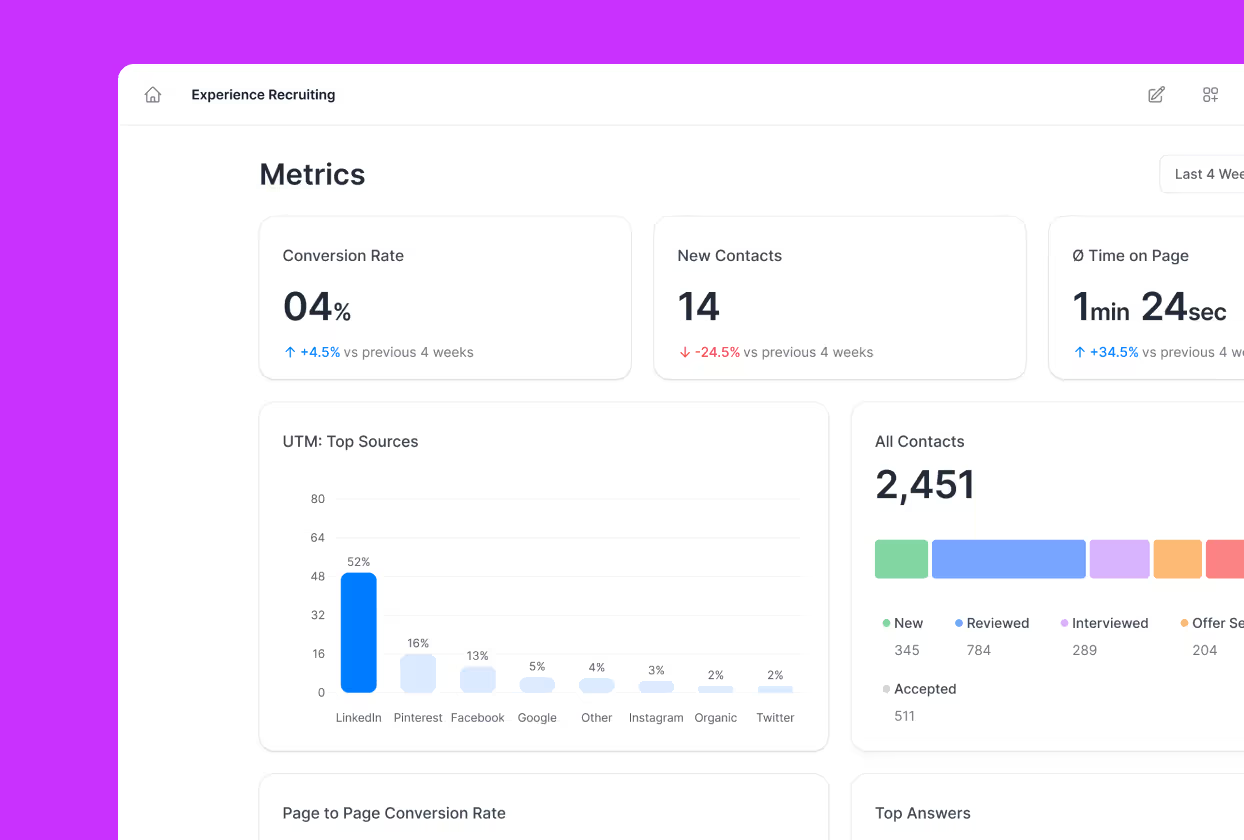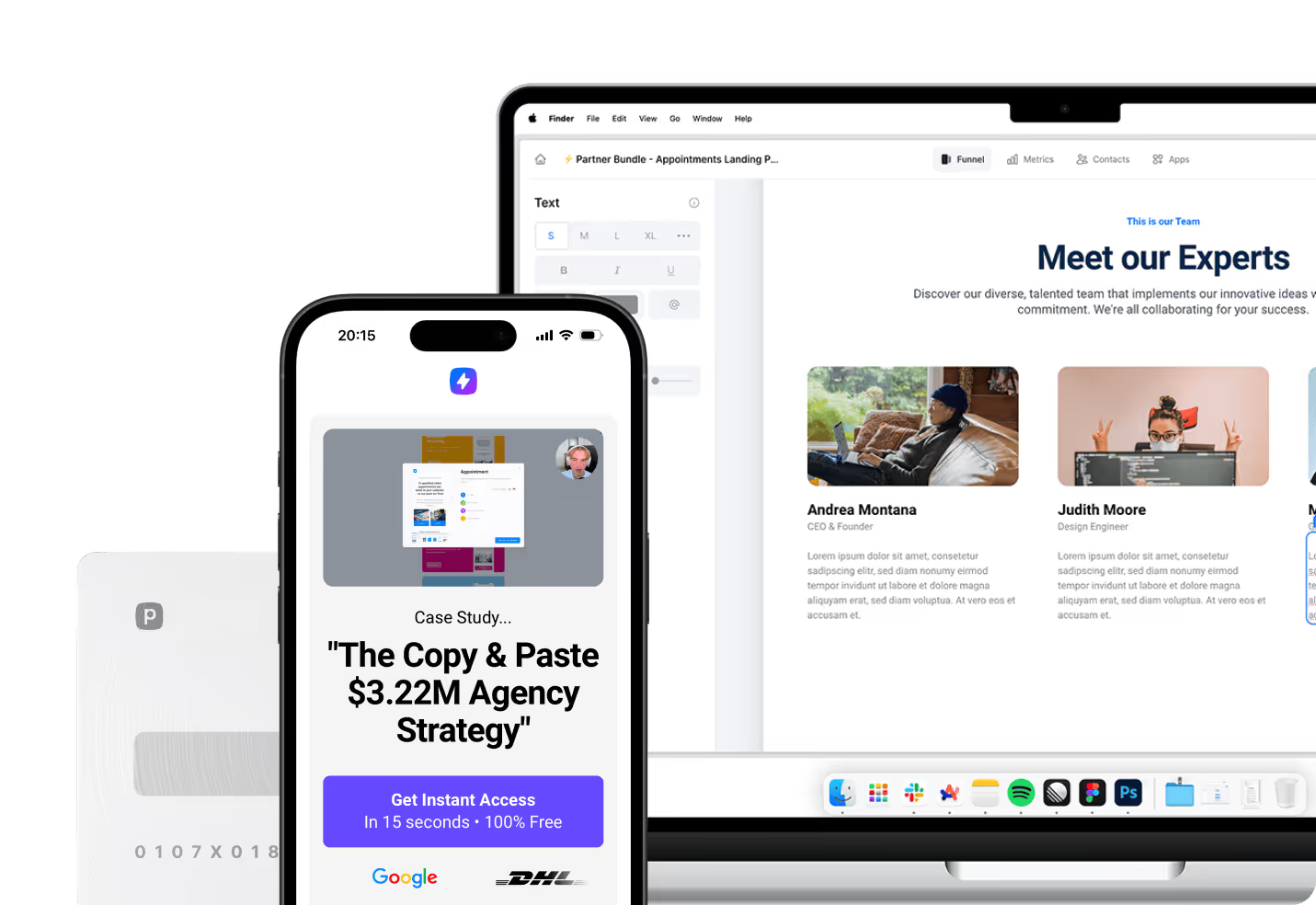Lead generation is the heartbeat of modern business growth, and the tools you choose can make or break your marketing success. Prefinery and Leadpages stand out as two powerful platforms, each with a unique approach to capturing and nurturing leads. Prefinery specializes in referral marketing and pre-launch waitlists, while Leadpages is renowned for its high-converting landing pages and robust lead capture forms. Both platforms play pivotal roles in the marketing ecosystem, but they cater to different needs and strategies.
Selecting the right solution means understanding not just what each platform does, but how it aligns with your business goals. Prefinery shines when it comes to building buzz and leveraging word-of-mouth, making it a favorite for product launches and beta programs. Leadpages, on the other hand, empowers marketers to create visually stunning landing pages that drive conversions. This comprehensive comparison explores every angle—from features and integrations to pricing and support—so you can confidently choose the platform that fits your lead generation strategy.
What Sets Prefinery and Leadpages Apart?
Every business has unique needs, and the right tool can accelerate your growth. Prefinery and Leadpages approach lead generation from different angles, each offering distinct advantages.
Prefinery is built for businesses that want to harness the power of referrals and exclusivity. Its core features revolve around creating viral waitlists, incentivizing users to invite friends, and managing beta access with ease. The platform’s customizable campaigns and advanced analytics help you identify your most engaged advocates and reward them for spreading the word.
Leadpages, in contrast, is all about conversion optimization. Its drag-and-drop builder, extensive template library, and integrated lead capture tools make it easy to launch high-performing landing pages without technical expertise. Whether you’re running a webinar, promoting a new product, or building your email list, Leadpages provides the tools to turn visitors into leads.
Before diving deeper, consider these key differences:
- Prefinery:
- Referral-driven growth: Viral waitlists and referral campaigns amplify your reach.
- Customizable rewards: Tailor incentives to motivate users to share.
- Beta management: Control access and gather feedback from early adopters.
- Advanced analytics: Track referral sources, user engagement, and campaign momentum.
- Leadpages:
- Landing page creation: Build and publish pages quickly with a visual editor.
- Conversion tools: Popups, alert bars, and forms boost lead capture.
- Template variety: Over 250 industry-optimized templates.
- A/B testing: Optimize pages for maximum conversions.
Transform Mobile Marketing with Perspective Funnels
While Prefinery and Leadpages each excel in their specialties, a new generation of marketers is seeking something different—a platform that combines the best of both worlds while addressing the realities of today's mobile-dominated landscape. Perspective Funnels emerges as a compelling alternative, designed from the ground up for mobile-first experiences rather than simply adapting desktop solutions for smaller screens. This innovative funnel builder addresses a critical gap in the market where 95% of paid traffic comes from mobile devices, yet most traditional platforms still prioritize desktop layouts and multi-page navigation.
What sets Perspective apart is its unique balance between customization and simplicity. The platform delivers fast loading speeds through single-page application architecture, eliminating the delays caused by page reloads that plague traditional builders. Combined with modern design templates and interactive tools like click-through quizzes and branching logic, Perspective creates engaging experiences that feel more like apps than websites. The built-in CRM, analytics, and personalization features mean agencies and creators can manage their entire funnel ecosystem in one place, making it particularly attractive for mobile users who need streamlined workflows. This comprehensive approach makes Perspective an ideal choice for the growing number of businesses that need to bridge the gap between referral marketing and conversion optimization in a mobile-first world.
Exploring Prefinery’s Referral Engine
Prefinery’s strength lies in its ability to turn your audience into active promoters. The platform is designed for businesses that want to create buzz, build anticipation, and grow their user base organically.
The referral system is at the heart of Prefinery. You can set up campaigns where users earn rewards for inviting friends, moving up waitlists, or completing specific actions. This viral loop not only increases signups but also fosters a sense of exclusivity and excitement around your product launch.
Prefinery’s dashboard provides a clear view of campaign performance, showing you which users are driving the most referrals and how your waitlist is growing. The platform supports tiered rewards, so you can offer escalating incentives to your top advocates. Automated emails keep participants engaged, sending personalized messages at key moments—like when they move up the waitlist or unlock a new reward.
Customization is another standout feature. Every aspect of the user experience, from signup forms to referral pages, can be tailored to match your brand. Prefinery supports multiple languages, making it a great choice for global campaigns. The advanced form builder lets you collect detailed information from applicants, helping you segment and target your audience more effectively.
Building High-Converting Pages with Leadpages
Leadpages is a favorite among marketers who want to launch beautiful, conversion-focused landing pages without writing a single line of code. The platform’s drag-and-drop editor makes it easy to customize layouts, add images, and tweak content until your page is just right.
With over 250 templates, Leadpages covers a wide range of use cases—from event registrations and product launches to lead magnets and sales pages. Each template is designed with conversion in mind, featuring proven layouts and persuasive elements that encourage visitors to take action.
Leadpages doesn’t stop at landing pages. The platform also offers popups, alert bars, and opt-in forms that can be embedded across your website. These tools help you capture leads at every touchpoint, whether someone is reading your blog or browsing your homepage.
A/B testing is built into higher-tier plans, allowing you to experiment with different headlines, images, and calls to action. Real-time analytics show you which pages are performing best, so you can make data-driven decisions and continually improve your results.
Comparing User Experience and Interface
A smooth, intuitive interface can make all the difference when managing your marketing campaigns. Both Prefinery and Leadpages prioritize usability, but they cater to different workflows.
Prefinery’s dashboard is streamlined for managing referral campaigns. You’ll find clear metrics on waitlist growth, referral activity, and user engagement. The platform is designed to minimize complexity, focusing on the tools you need to launch and monitor viral campaigns. Integration with non-Prefinery forms is straightforward, thanks to the JavaScript Web API, which works seamlessly with platforms like Webflow, Leadpages, and popular e-commerce solutions.
Leadpages offers a more visual experience. The drag-and-drop editor is intuitive, making it easy to build and customize landing pages. While the editor is powerful, some users note limitations when making significant template changes. Mobile editing is somewhat restricted—adjustments for mobile views affect all device layouts, which can be a challenge for those seeking pixel-perfect designs. Despite these quirks, Leadpages excels at helping users create professional-looking pages quickly.
Both platforms have learning curves, but the focus differs: Prefinery is all about efficient referral management, while Leadpages is geared toward creative page design and conversion optimization.
Integration Options for Seamless Workflows
Modern marketing stacks rely on seamless integrations, and both Prefinery and Leadpages offer robust options to connect with your favorite tools.
Prefinery takes an API-first approach, making it highly flexible for technical teams. The JavaScript Web API allows you to integrate referral campaigns with existing forms on platforms like Shopify, WooCommerce, and Instapage. Webhooks enable automated reward delivery, and Zapier integration opens the door to thousands of third-party apps. This flexibility means you can embed Prefinery’s referral engine into your current workflow without disrupting your lead capture process.
Leadpages boasts over 90 integrations, including direct connections with popular email marketing services and CRMs such as ActiveCampaign, AWeber, HubSpot, and Salesforce. Zapier support extends this reach even further, allowing you to automate tasks and sync data across your marketing stack. Analytics integrations are straightforward—just paste your tracking codes for Google Analytics, Facebook Pixel, or Hotjar. WordPress users benefit from a dedicated plugin, while other platforms can use HTML exports to embed Leadpages content.
When choosing between the two, consider whether you need out-of-the-box integrations with marketing tools (Leadpages) or a customizable, API-driven approach (Prefinery).
Pricing Models and Value for Money
Budget is always a factor when selecting a marketing platform. Both Prefinery and Leadpages offer tiered pricing, but their structures reflect their different focuses.
Leadpages provides three main plans:
- Standard: $49 per month ($37/month billed annually), includes basic landing page features and one custom domain.
- Pro: $99 per month ($74/month billed annually), adds A/B testing, online sales, and supports up to three domains.
- Advanced: Custom pricing for enterprise needs, with premium support and advanced integrations.
All plans come with unlimited traffic and leads, free hosting, and access to the full template library. The main limitation of the Standard plan is its single-domain restriction, which may not suit businesses managing multiple brands.
Prefinery’s pricing is designed for scalability:
- Lite: $39 per month, includes 1,000 users and one campaign.
- Essentials: $199 per month, includes 10,000 users, three campaigns, and advanced analytics.
- Pro: $399 per month, includes 50,000 users, ten campaigns, and priority support.
Overage charges apply if you exceed your user limit, but you’re not forced to upgrade plans. All plans include unlimited emails, customizable forms, and viral referral features. Prefinery’s value lies in its ability to drive organic growth through referrals, which can significantly reduce customer acquisition costs over time.
Lead Generation Performance: Which Platform Delivers More?
The ultimate test of any marketing tool is its ability to generate high-quality leads. Prefinery and Leadpages take different paths to this goal, each with proven results.
Prefinery leverages the power of social proof and word-of-mouth. Referral campaigns create a multiplier effect, where each new user can bring in several more. This approach is especially effective for product launches, beta programs, and businesses that thrive on exclusivity. By rewarding advocates and tracking their impact, Prefinery helps you identify and nurture your most valuable customers.
Leadpages focuses on direct conversion. Its templates and tools are designed to guide visitors toward a single action—signing up, registering, or making a purchase. A/B testing and analytics ensure you’re always optimizing for better results. While Leadpages doesn’t offer referral features, its strength lies in turning cold traffic into warm leads through compelling landing pages.
Both platforms can dramatically improve your lead generation, but the best choice depends on your strategy: viral growth through referrals (Prefinery) or conversion-focused campaigns (Leadpages).
Mobile Experience and Device Compatibility
Mobile traffic is a major consideration for any marketing campaign. Both Prefinery and Leadpages address mobile responsiveness, but their approaches differ.
Prefinery ensures that referral campaigns and waitlists function smoothly across devices. The platform’s “Automatically Show Referral Page to Returning Users” feature recognizes visitors and displays personalized content, creating a seamless experience on mobile and desktop. This feature works best with Prefinery’s embeddable widgets, maintaining consistency regardless of device.
Leadpages offers responsive templates that adapt to any screen size. The drag-and-drop editor allows you to preview pages on different devices, but mobile-specific edits are limited—changes made for mobile views affect all layouts. While this keeps designs consistent, it can be restrictive for businesses with a mobile-first audience.
When mobile experience is a top priority, consider how each platform’s approach aligns with your audience’s habits and your campaign goals.
Customer Support and Learning Resources
Reliable support and educational content can make your marketing journey smoother. Both Prefinery and Leadpages offer resources to help users succeed, but their focus areas differ.
Leadpages provides tiered support based on your subscription. Standard users get regular support, while Pro and Advanced plans include priority assistance. The platform offers a comprehensive knowledge base, virtual workshops, and a large user community. Support is available via email, chat, and phone, though response times may vary by plan.
Prefinery stands out for its educational resources on referral marketing. The platform’s blog features in-depth guides on building effective referral programs, understanding the psychology of word-of-mouth, and implementing creative campaign ideas. Technical support is included with every plan, and higher tiers offer strategy sessions and concierge onboarding. Prefinery’s focus on strategic guidance makes it a strong choice for businesses new to referral marketing.
Best Practices for Maximizing Each Platform
To get the most from Prefinery and Leadpages, follow these best practices:
- Define clear goals for your campaigns. Whether you’re building a waitlist or launching a landing page, know what success looks like.
- Customize your user experience. Tailor forms, emails, and rewards to match your brand and audience preferences.
- Leverage integrations. Connect your platform to email marketing, CRM, and analytics tools for seamless workflows.
- Monitor performance metrics. Use built-in analytics to track signups, referrals, and conversions, adjusting your strategy as needed.
- Engage your audience. Send timely, personalized messages to keep users excited and motivated.
- Test and optimize. Experiment with different templates, headlines, and incentives to find what works best.
- Stay compliant. Ensure your campaigns meet GDPR, CCPA, and other privacy standards.
- Invest in education. Take advantage of blogs, workshops, and support resources to continually improve your marketing skills.
Best Practices for Referral and Landing Page Campaigns
To maximize your results, keep these best practices in mind:
- Set clear objectives. Know what you want to achieve before launching a campaign.
- Personalize your messaging. Tailor communications to your audience’s interests and behaviors.
- Test different approaches. Use A/B testing and analytics to refine your strategy.
- Reward engagement. Offer meaningful incentives to encourage participation.
- Automate where possible. Use integrations and triggers to streamline workflows.
- Monitor compliance. Stay up to date with privacy regulations and best practices.
- Engage your community. Foster a sense of belonging and excitement around your brand.
- Invest in learning. Take advantage of educational resources to stay ahead of the curve.
Unlock Your Lead Generation Potential Today
Selecting the right lead generation platform is a pivotal decision for your business. Prefinery and Leadpages each offer powerful tools to help you attract, engage, and convert your ideal customers. By focusing on your specific goals—whether it’s building a viral waitlist, optimizing landing page conversions, or both—you can create a marketing engine that fuels long-term success.
Take the time to explore each platform’s features, integrations, and support resources. Test different approaches, measure your results, and don’t hesitate to combine the strengths of both tools for maximum impact. For mobile-driven marketers who prioritize speed, personalization, and performance in today’s mobile-first environment, platforms like Perspective Funnels offer a compelling alternative that bridges the gap between traditional solutions. With the right strategy and the best tools at your disposal, your business is poised to capture more leads, nurture stronger relationships, and achieve your growth ambitions.


















